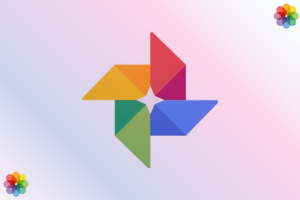AI isn’t here to replace your job; rather, it’s here to enhance your productivity, autonomy, and efficiency at work.
As a journalist covering artificial intelligence, I often hear the question: “Will AI take my job?” After careful consideration, research, and conversations on platforms like YouTube and Reddit, I’ve concluded that AI is here to stay for the foreseeable future. Whether it takes your job or not depends on how you adapt. Big corporations seem to follow the idea: “AI may not replace your job, but someone who knows how to use AI might take it.”
Tech giants certainly have their interests, with massive investments in AI R&D. Still, I believe that learning how to effectively use AI can give you a significant advantage. Throughout 2024, I’ve integrated various AI tools into my daily tasks. It’s important to clarify that I don’t support AI-generated content in place of original work (with a few exceptions, which I’ll explain later). AI should be a tool that complements your abilities, not a crutch. Your creativity and intelligence can shape how AI performs in ways that might surprise you. Below are a few AI tools I found invaluable this year.
Perplexity AI
Imagine a search engine driven by AI that surfaces relevant research papers and valuable information at your fingertips. For journalists, Perplexity AI is one of the best tools for staying updated with credible sources. It’s not the tool for generating images in seconds, but it shines when it comes to real-time data retrieval and delivering concise, context-aware answers, complete with citations. Unlike traditional search engines, Perplexity is great for answering complex queries, summarizing long reports, and even supporting follow-up questions in a conversation-like manner. It also allows you to refine results with focus modes like Web, Academic, Math, Writing, Video, and Social, depending on your needs.
ChatGPT
OpenAI’s ChatGPT has become an essential assistant for journalists. Over the past two years, it’s evolved into more than just a tool for brainstorming ideas. It helps with analyzing data, drafting story outlines, and even co-editing interviews with experts. ChatGPT also excels at proofreading, ensuring your text is coherent and grammatically correct. I find it particularly useful for summarizing long articles, analyzing trends, refining headlines, and translating multiple languages. Recently, its integration with DALL-E allows for experimenting with images for stories. It’s a versatile tool, especially when it comes to fact-checking, and I’m impressed by how it adapts to user preferences.
Claude 3.5 Sonnet
In November 2023, Anthropic launched Claude, an AI that has become my go-to tool for reading documents, research papers, and transcripts. Claude 3.5 Sonnet, launched in June, is an advanced model capable of processing complex tasks and handling large amounts of text. It’s perfect for refining drafts, suggesting edits, and generating alternative story angles. I use it to extract key insights from lengthy reports and interviews, making it an indispensable research assistant.
Pi Chatbot
When work gets overwhelming, Pi, launched by Inflection AI, offers a unique approach. Unlike other AI tools focused on data and content creation, Pi focuses on emotional well-being. It provides a supportive, empathetic conversational experience, offering a digital companion for managing stress, burnout, or writer’s block. Pi’s ability to ask thoughtful follow-up questions and offer practical suggestions makes it an excellent mental wellness tool.
Meta AI on WhatsApp
Meta’s AI, powered by Llama 3.2, integrates seamlessly into WhatsApp and offers a range of helpful features. Whether it’s crafting personalized greeting cards, correcting grammar, or composing story pitches on the go, Meta AI is a fast, mobile-friendly assistant. It’s a great tool for refining messages, drafting emails, and improving productivity within the chat environment.
While these AI tools can significantly enhance your work efficiency, human judgment remains irreplaceable. They excel in many ways, but they also have limitations. It’s crucial to use your discernment when working with AI-generated outputs. After all, there’s no substitute for human creativity and intuition.



